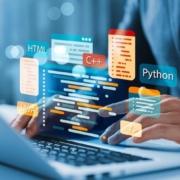How Python is Used in Government Software Modernization Projects
Across the globe, government agencies are investing in digital transformation to improve citizen services, increase operational efficiency, and reduce dependence on outdated infrastructure. One of the most powerful tools enabling this shift is Python. The use of Python in government software modernization has grown rapidly in recent years due to its flexibility, scalability, and open-source ecosystem.
Agencies seeking to streamline legacy platforms are now turning to Python development services to replace or refactor their outdated systems. With Python’s broad support for APIs, automation, security, and data analytics, it’s proving to be a future-ready language for the public sector.
Why Modernize Government Software?
Many government agencies still rely on legacy applications built decades ago using COBOL, VBScript, or outdated Java stacks. These systems pose several problems:
- High maintenance costs
- Security vulnerabilities
- Limited integration with cloud and mobile platforms
- Shortage of developers for legacy tech
- Inefficiencies in serving modern user expectations
This has led to a widespread push toward legacy system modernization. Python offers an effective path to migrate critical government functions into secure, scalable applications that align with today’s digital requirements.
Why Python is the Preferred Choice for Governments
Using Python in government software modernization provides several advantages:
1. Open-Source and Cost-Effective
Python is open-source, reducing the total cost of ownership. It eliminates the need for expensive proprietary licenses, aligning well with open-source government tech initiatives and budget-conscious departments.
2. Fast Development Cycles
With its simple syntax and a massive library ecosystem, Python accelerates development. Agencies can build prototypes quickly and deploy updates faster without long procurement or vendor cycles.
3. Security and Compliance
Python supports modern encryption, access control, and secure communication protocols. Libraries like cryptography, PyJWT, and requests help build secure apps that meet government-grade compliance standards such as FISMA, FedRAMP, or GDPR.
4. Integration and Interoperability
Python integrates easily with databases, APIs, web services, and even mainframe systems. This makes it ideal for hybrid environments where new tools must coexist with older systems during transitional phases.
Use Cases of Python in Government Projects
The application of Python in government software modernization spans across many domains:
Digital Public Services
Governments are using Python frameworks like Django and Flask to create citizen-facing platforms—such as tax filing, permit applications, and benefit enrollment systems.
Automation and RPA
Python powers automated workflows to reduce manual tasks in departments like HR, finance, and public records. Automation saves time, improves data accuracy, and increases productivity.
Data Analytics and Dashboards
Python’s data libraries (Pandas, NumPy, Matplotlib) allow agencies to generate real-time insights and predictive analytics—used for budgeting, public health tracking, and emergency management.
AI and NLP
Government entities are experimenting with AI for fraud detection, document classification, and chatbots. Python supports all major AI frameworks, including TensorFlow, spaCy, and Hugging Face.
The Role of Legacy System Modernization
Many public institutions are undertaking legacy system modernization by reengineering core modules in Python. These migrations typically involve:
- Replacing outdated monoliths with modular APIs
- Refactoring business logic into Python microservices
- Creating secure web portals using modern frontend-backend stacks
- Deploying applications on cloud-native environments
This shift is often phased to minimize risk, starting with non-critical systems and gradually expanding as internal capabilities grow.
Supporting Open-Source Government Tech
Governments worldwide are adopting open-source government tech to reduce vendor lock-in and promote transparency. Python, with its open license and global community support, aligns perfectly with this movement.
Agencies can contribute to or reuse Python-based tools, saving time and public funds. Examples include data.gov portals, auditing tools, and document verification APIs.
Hire Python Developers for Public Sector Transformation
Government IT teams often need external expertise to modernize complex systems. Organizations looking to adopt Python should Hire Python Developers with experience in compliance, security, and large-scale system design.
These developers bring:
- Best practices in clean, maintainable code
- Knowledge of integration with old and new infrastructure
- Experience with DevSecOps and automation pipelines
- Familiarity with government procurement and documentation standards
Conclusion
In 2025, the use of Python in government software modernization is enabling public institutions to modernize responsibly, securely, and affordably. By moving away from outdated legacy stacks and toward open, modular architectures, agencies are creating more responsive and efficient public services.
Whether you’re focused on digital transformation, data analytics, or automation, Python development services offer the technical foundation to achieve those goals. From replacing outdated code to building AI-enhanced tools, Python enables lasting innovation in the public sector.

